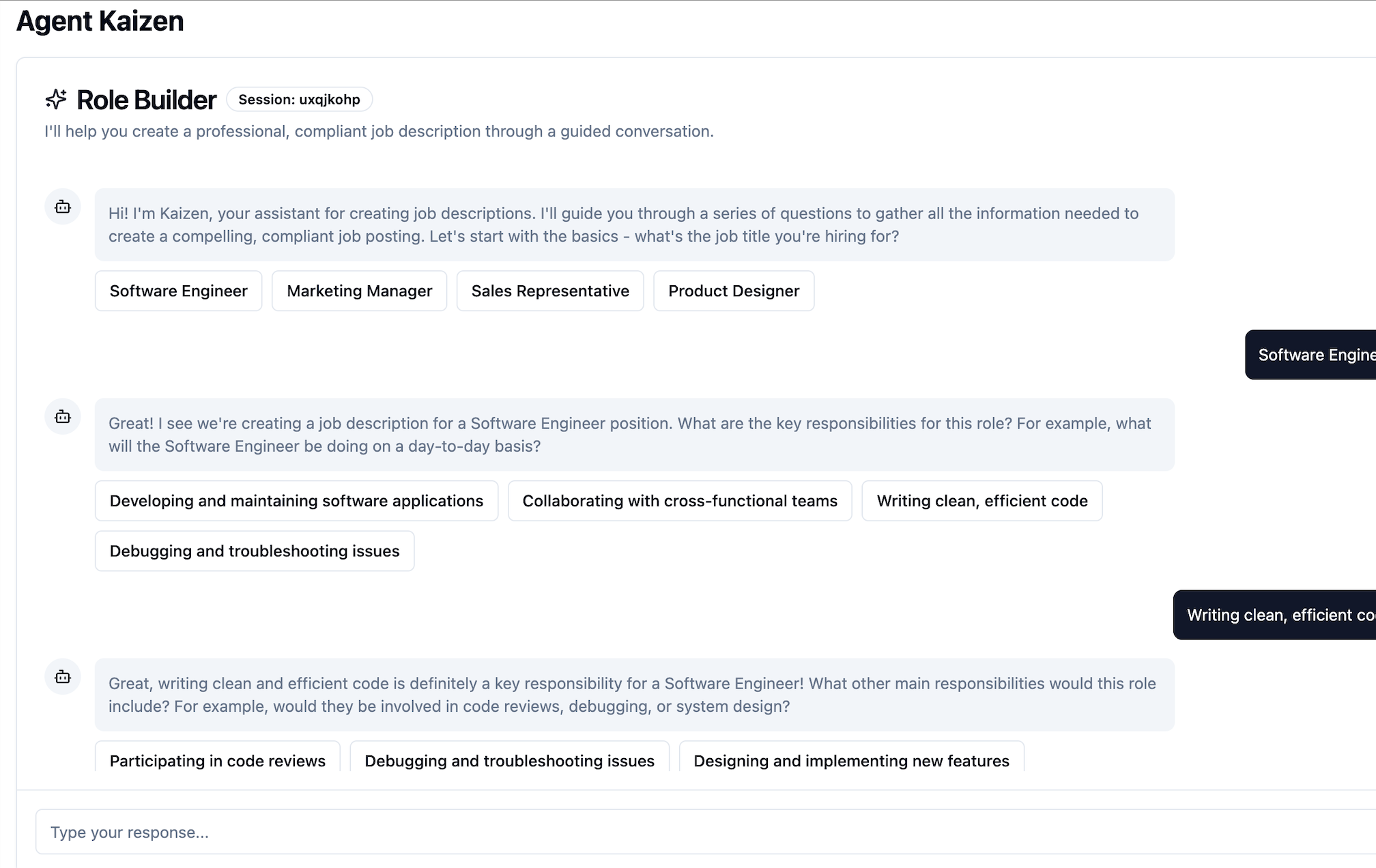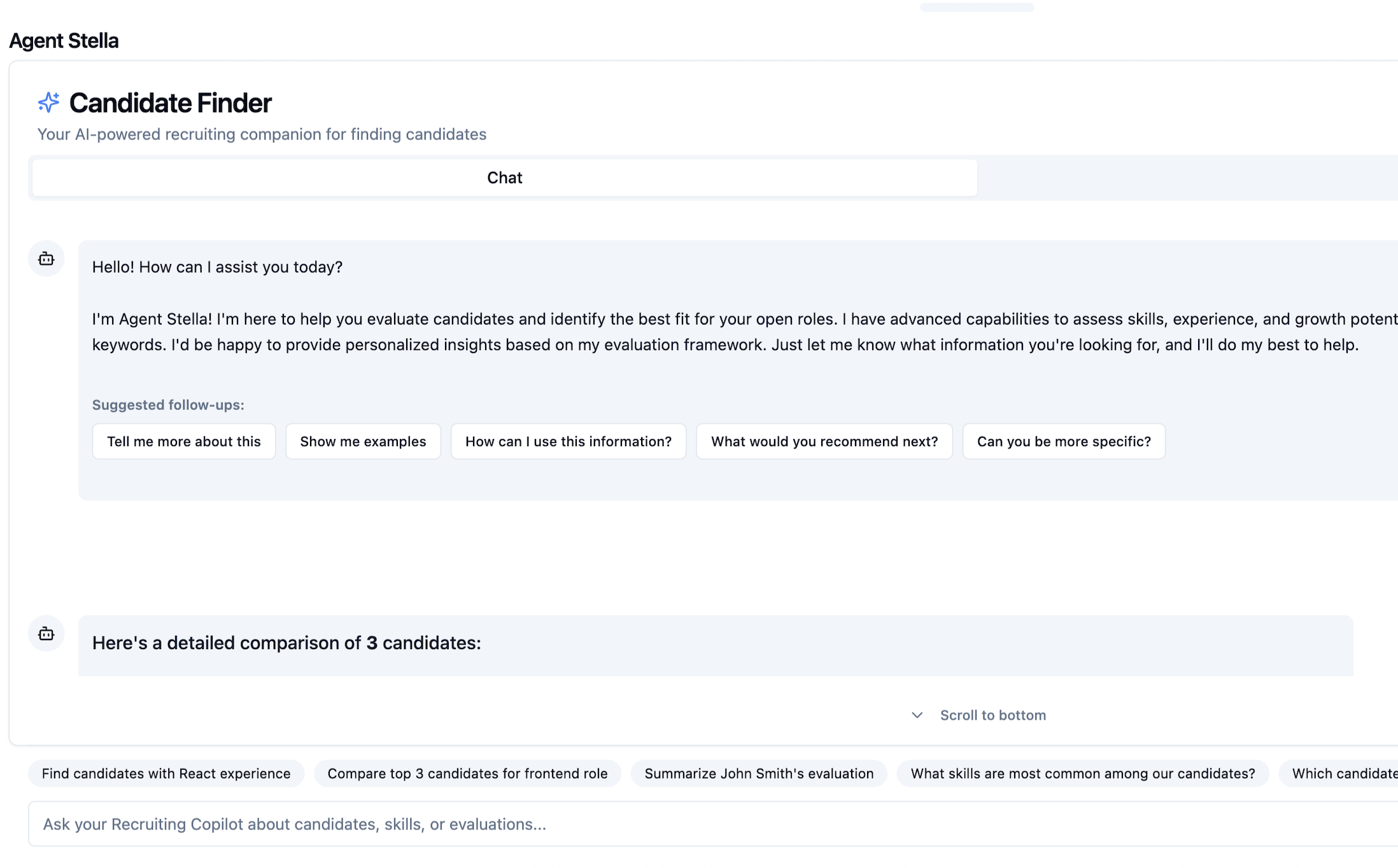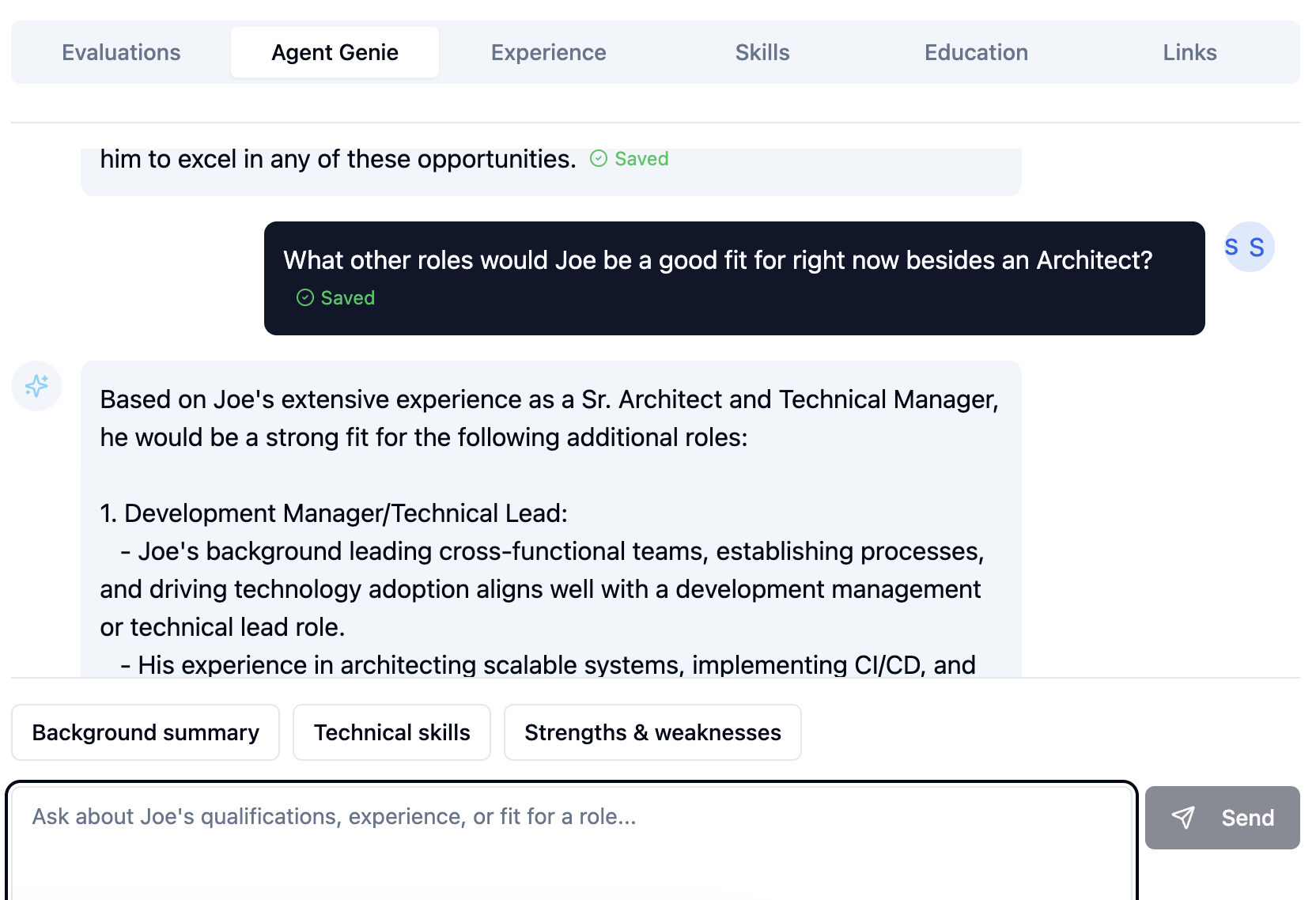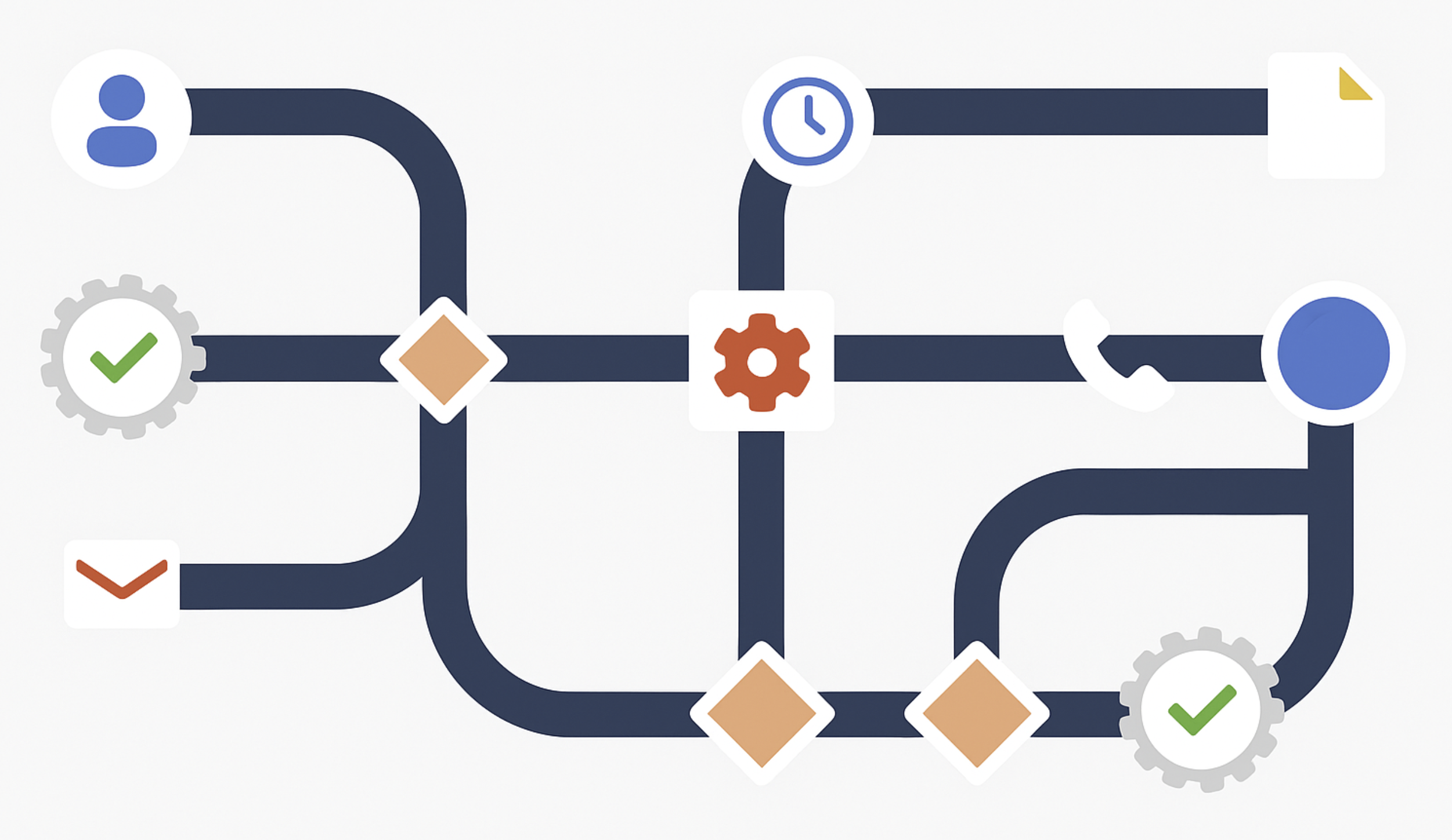Your Intelligent
Hiring Copilot
Kreativs Copilot augments your team with three Agentic AI partners: Kaizen for role definition, Stella for candidate search, and Genie for profile insights. Together they deliver precise, transparent, and scalable hiring, while surfacing misalignments upfront.

Next-generation hiring, powered by Agentic AI
Resumes can be stuffed with keywords, but real hiring requires context. Copilot interprets signals of contribution, alignment, and potential, delivering faster shortlists, smarter insights, and hires that thrive.
Trusted by HR teams to reduce time-to-select by 90% and uncover hidden talent.
Meet Your AI Workforce
The First AI Workforce Built for Hiring. Three Agents. One Copilot.
Guidance at Every Stage Providing Clarity From Start to Finish.

Kaizen
Role creation & definition grounded in skills, culture, archetypes, and outcomes, not generic job posts.
Stella
Contextual scoring & ranking that cuts through keyword-stuffed resumes to surface true fits.
Genie
Deep profile analysis: uncovering strengths, gaps, red flags, and interview prompts instantly.
Copilot at Work: Delivering Clarity, Precision, and Advantage at Every Step
Copilot transforms hiring from fragmented steps into a seamless advantage. By redefining role creation, uncovering context in candidate profiles, validating real skills, and answering questions instantly, Copilot gives your team the clarity and confidence to hire with precision, turning every stage of the process into a competitive edge.
Build roles that attract the right talent from the start
Kaizen doesn't create generic job postings, it builds role definitions that capture your real needs, outcomes, and culture.

- •Precision role design: Captures technical requirements and success markers.
- •Better candidate alignment: Attracts talent that truly matches your needs.
- •Foundation for evaluation: Every shortlist and assessment is rooted in the criteria that matter most.
Find, compare, and understand candidates instantly
Stella acts as your 24/7 HR partner to answer questions, surface insights, and instantly search for the right candidates.

- •Instant contextual search: Find candidates without relying on keywords.
- •Clarity on fit: Explains skills, archetypes, culture, and experience in plain language, and much more.
- •Risks revealed upfront: Surfaces gaps, misalignments, and interview prompts before you waste time.
- •Compare with confidence: Side-by-side candidate comparisons.
Uncover insights resumes never show
Genie goes beyond keywords to reveal the full story of each candidate, highlighting hidden strengths, gaps, and risks.

- •True impact uncovered: Identifies what candidates actually contributed.
- •Misalignments caught early: Flags gaps before interviews.
- •Confidence in shortlists: Ensures only role-fit candidates advance, reducing mis-hires.
Proven skills before the interview, not after the hire
Copilot designs assessments unique to each candidate and role, validating capabilities that matter most for success.

- •Custom-built every time: No two candidates receive the same assessment.
- •Objective proof of ability: Moves beyond claims to demonstrated skills.
- •Transparent by design: Questions and answers are always available for hiring teams to review.
Built for the Modern Enterprise
From multi-candidate analysis to individual profile deep dives, Copilot's Agentic AI Agents provide transparency and clarity that teams can act on with confidence.

More than automation, augmentation at scale
Copilot's Agentic AI Agents work together to architect roles, evaluate candidates with context, and recommend shortlists, while keeping your team fully in control.
📥 Just connect your ATS or import candidate data — we'll take it from there.
How It Works
Connect
Connect ATS or HR system
Kaizen
Defines the role
Stella
Identifies top fits
Genie
Delivers deep insights
Shortlist
Assess Interview-ready candidates
Decision
Evidence backed hiring decisions
Seamless integration, zero disruption
Copilot is built to meet you where you are - adoption is simple, flexible, and fast.

Self-Service Option
For businesses using other Applicant Tracking Systems (ATS) or HR systems, purchase licenses and self-provision API connections or upload Excel files to import candidate data effortlessly.

Enterprise Integration
Designed for companies using Workday, SAP SuccessFactors, or Oracle HCM. Our white-glove service ensures seamless customization and implementation. Contact sales to get started!


Customized Workflows
Adapt Copilot to your unique processes and scale with ease.

Proven in the field
A global recruiting firm used Copilot to review hundreds of applicants for a Senior Software Engineer role. In minutes, Copilot delivered a shortlist of the top 5 with contextual scoring, and unlike the ATS, flagged misalignments upfront so the team avoided weeks of wasted interviews. From this shortlist, one candidate was extended an offer and hired with confidence.
Key Result
Copilot reduced time-to-select by ~90%, surfacing insights normally found in late interviews or post-hire, giving the client a competitive edge in securing top talent in the AI economy.
Copilot Highlights
- ⏱90% faster: reduced time-to-select from 1-2 months to minutes by providing contextual insights upfront, not keyword matches.
- 🚩Misalignments flagged: disqualified ATS-ranked candidates who lacked real role fit.
- ✅Validated hire: 1 of the top 3 candidates identified by Copilot was extended an offer and hired.
Ready to Transform Your Hiring Process?
Augment your team with Copilot's Agentic AI for faster cycles, deeper insights, and stronger hires from day one.